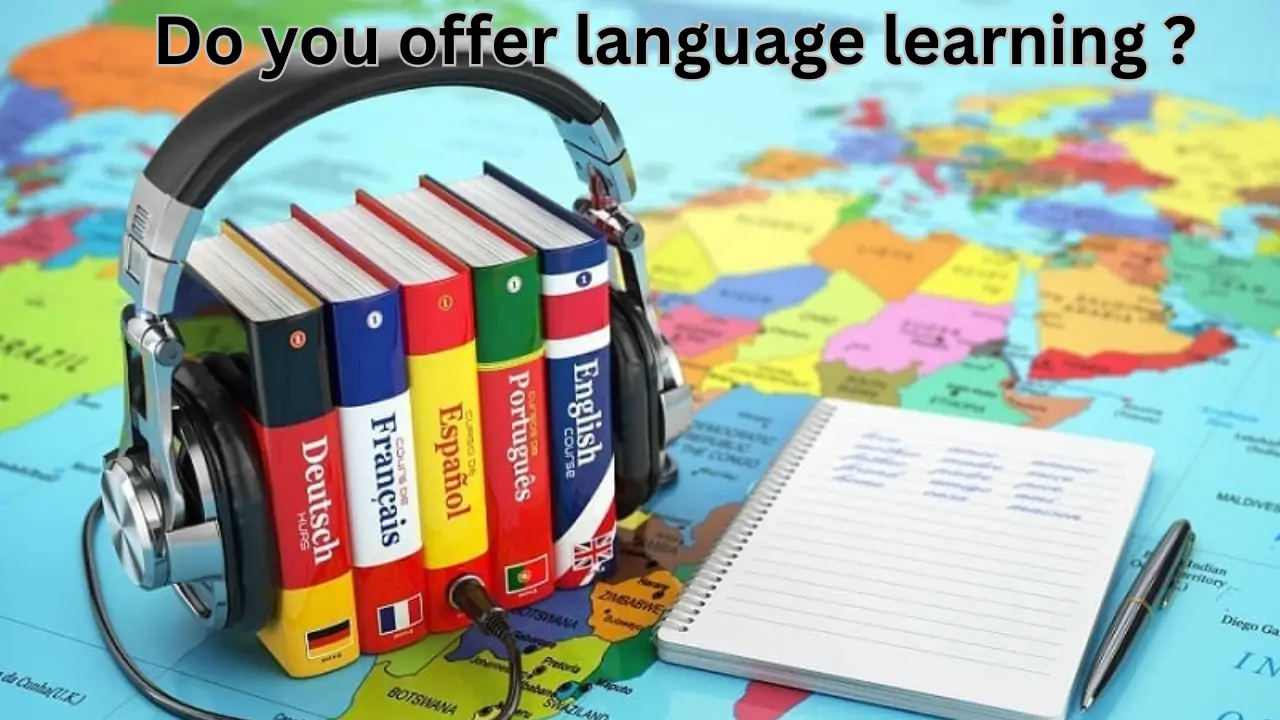Language is one of the most powerful tools of communication and connection. As globalization continues to shape the way we live and work, the demand for learning additional languages has grown significantly. Whether it is English as a global lingua franca, regional languages for cultural and professional engagement, or foreign languages for business and travel, language learning opportunities have become a necessity in today’s world.
This article explores how various institutions, organizations, and platforms offer language learning programs, the benefits of multilingual skills, and the latest updates in the language learning industry.
Why Language Learning Matters
Language proficiency is no longer just an academic skill; it directly influences career, travel, and cultural experiences. Here are a few reasons why individuals seek structured learning opportunities:
- Global Communication: English remains the top choice for global business communication.
- Cultural Connection: Regional and foreign languages help in preserving traditions and building strong relationships in diverse communities.
- Career Opportunities: Multilingual candidates gain an advantage in professional sectors like IT, BPO, hospitality, and education.
- Personal Growth: Learning new languages sharpens memory, problem-solving skills, and adaptability.
Types of Language Learning Offered
To meet the needs of diverse learners, various options are available in structured and flexible formats.
1. English Language Learning
- General English: Focus on grammar, vocabulary, and conversational fluency.
- Business English: Special modules for corporate communication, email writing, and presentations.
- Exam Preparations: Training for exams like IELTS, TOEFL, and PTE.
2. Regional Language Learning (India as an Example)
India boasts linguistic diversity with more than 22 officially recognized languages. Learning regional languages helps in cultural integration and supports industries like tourism and healthcare. Popular courses include:
- Hindi
- Tamil
- Bengali
- Marathi
- Kannada
- Punjabi
3. Foreign Language Learning
Global languages are increasingly popular for academic and professional purposes. Courses are often structured around international standards like CEFR (Common European Framework of Reference). Commonly offered languages include:
- Spanish
- French
- German
- Mandarin Chinese
- Japanese
- Arabic
- Korean
- Russian
Modes of Language Learning
There are different ways institutions and platforms provide language training today:
| Mode of Learning | Key Features | Suitability |
|---|---|---|
| Classroom Training | Face-to-face interaction, direct practice | Students, professionals with flexible schedules |
| Online Live Classes | Virtual classrooms, interaction with trainers | Remote learners, working professionals |
| Mobile Applications | Self-paced lessons, gamified quizzes | Beginners, hobby learners, travelers |
| Hybrid Model | Combination of online and offline learning | Learners seeking flexibility and personal guidance |
| Self-Study Materials | Books, videos, podcasts | Independent learners |
Latest Updates in Language Learning Industry
With technology becoming a crucial part of education, the landscape of language learning has evolved significantly.
1. AI and Language Learning
- AI-powered chatbots now help learners practice conversations in real time.
- Machine learning algorithms personalize lessons according to learner progress.
2. VR/AR Applications
- Virtual reality tools are being used to simulate real-world conversations in restaurants, airports, and offices.
- AR-based flashcards bring interactive learning experiences for children.
3. Growth of Regional Language Demand
- Regional languages in India are seeing increased demand due to government initiatives promoting linguistic heritage.
- Media streaming platforms also contribute by offering multilingual content.
4. Corporate Partnerships
- Multinational companies are collaborating with training institutes to provide language skill modules for their employees.
- Focus is shifting towards cross-cultural communication training along with traditional language learning.
5. Certification and Standardization
- Recognized certification programs are gaining importance for academic and immigration purposes.
- International benchmarks like CEFR levels (A1 to C2) are increasingly applied to non-European languages.
Benefits of Offering Language Learning Programs
- Enhanced Employability: Multilingual employees are in high demand in sectors like IT, education, and tourism.
- Cultural Preservation: Encourages young learners to connect with heritage and community values.
- Global Mobility: Facilitates study-abroad opportunities, travel ease, and better immigration prospects.
- Business Expansion: Cross-border trade requires employees who can communicate in diverse languages.
- Lifelong Learning: Supports cognitive development and confidence-building across all age groups.
Challenges in Language Learning
Despite growing popularity, some challenges persist:
- Regional Accessibility: Availability of trained tutors in rural or semi-urban areas.
- High Cost of Advanced Courses: Specialized foreign language certifications can be expensive.
- Time Commitment: Learners often struggle with balancing work, study, and practice hours.
- Technological Barriers: Lack of internet access or digital literacy in some regions hampers online adoption.
Future Trends in Language Learning
Looking beyond 2025, language learning is expected to evolve with:
- AI-driven personalized learning paths for each student.
- Rising need for multilingual AI voice assistants and translators.
- Integration of soft-skill training with language learning, focusing on accent reduction, presentation, and negotiation.
- Gamification and immersive experiences as mainstream educational tools.
- Professional certifications embedded into degree programs.
Conclusion
Yes, many institutions and platforms today do offer language learning opportunities in English, regional, and foreign languages tailored for different learner needs. With advancements in technology, flexible learning modes, and increased demand for multilingual competence, the field of language education is undergoing rapid transformation.
Whether one seeks better academic prospects, career growth, or cultural engagement, language learning remains a gateway to new opportunities. As global communication expands, the ability to understand and speak multiple languages will continue to be one of the most valuable skills of the future.

















